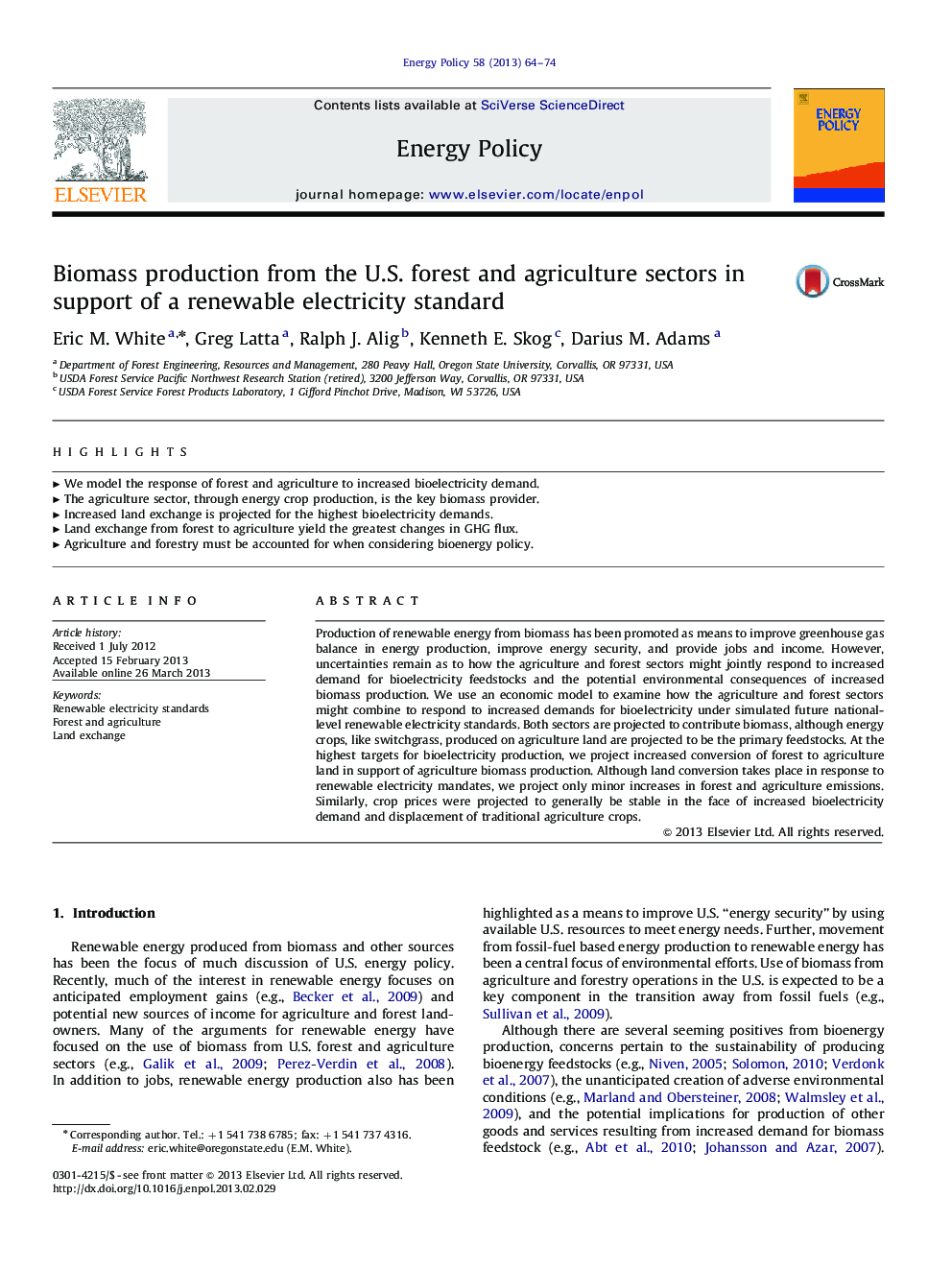| Article ID | Journal | Published Year | Pages | File Type |
|---|---|---|---|---|
| 995529 | Energy Policy | 2013 | 11 Pages |
Production of renewable energy from biomass has been promoted as means to improve greenhouse gas balance in energy production, improve energy security, and provide jobs and income. However, uncertainties remain as to how the agriculture and forest sectors might jointly respond to increased demand for bioelectricity feedstocks and the potential environmental consequences of increased biomass production. We use an economic model to examine how the agriculture and forest sectors might combine to respond to increased demands for bioelectricity under simulated future national-level renewable electricity standards. Both sectors are projected to contribute biomass, although energy crops, like switchgrass, produced on agriculture land are projected to be the primary feedstocks. At the highest targets for bioelectricity production, we project increased conversion of forest to agriculture land in support of agriculture biomass production. Although land conversion takes place in response to renewable electricity mandates, we project only minor increases in forest and agriculture emissions. Similarly, crop prices were projected to generally be stable in the face of increased bioelectricity demand and displacement of traditional agriculture crops.
► We model the response of forest and agriculture to increased bioelectricity demand. ► The agriculture sector, through energy crop production, is the key biomass provider. ► Increased land exchange is projected for the highest bioelectricity demands. ► Land exchange from forest to agriculture yield the greatest changes in GHG flux. ► Agriculture and forestry must be accounted for when considering bioenergy policy.
